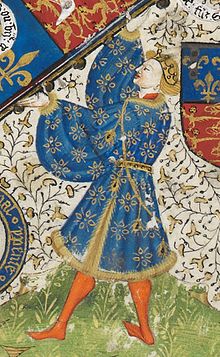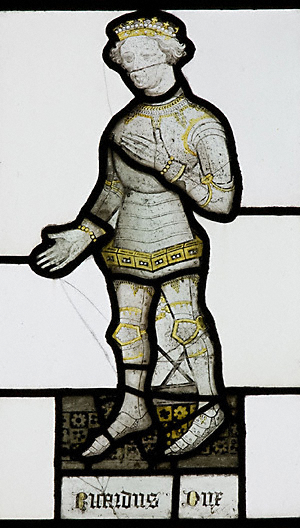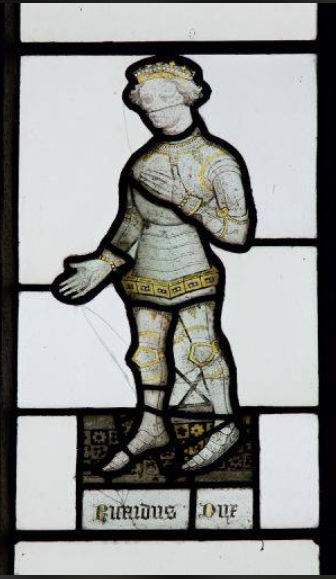The online video series History Calling has recently uploaded a very good analysis of the arguments advanced both in the fifteenth century ( occasionally ) and in the twenty-first century ( more frequently ) as to the likelihood or otherwise of King Edward IV having been illegitimate.
The video can be viewed at WAS EDWARD IV ILLEGITIMATE? | The life of Edward IV | The birth of Edward IV
Personally I agree with the conclusions of the presenter, and say so in a note I posted in the comments section.
I am repeating the substance of that here, with illustrations, to make my point.
The three portraits of Richard Duke of York used in the video are misleading. Only the illumination from the Earl of Shrewsbury MS is contemporary.
Richard Duke of York in 1445
From the Shrewsbury MS
Image: Wikipedia
The statue, from the bridge gate in Shrewsbury is earlier snd probably of Richard’s uncle. The drawing of the stained glass in Penrith church is of a bearded man, which was not the fashion in Duke Richard’s lifetime. It is now thought to be much more likely his maternal grandfather the first Earl of Westmoreland.
However there are two surviving contemporary stained glass portraits of the Duke. One is in Cirencester church in a chantry chapel founded by some of his retainers. This shows him with fair or blonde hair - unless that is due to the techniques of glass painting with yellow -stain - and shows a typical military style haircut of the period

Image: Wakefield Historical Society
The other is in Trinity College Cambridge and shows him with wavy hair, perhaps not dissimilar to the Shrewsbury MS. The two glass portraits are similar, or at least not dissimilar, as to their facial features,
Richard Duke of York
Glass in Trinity College Cambridge
Image: History of Parliament Trust
Neither depiction enables any estimate of his height as he is shown alone. For that someone may have to open up his tomb in Fotheringhay church.
A final point is that in 1483 how many people in London would remember the appearance of a man who had died in 1460 and who had spent relatively little time in the city?





No comments:
Post a Comment